6 Essential Steps for Successful Mushroom Farming
- April 5, 2024
- 0 comment
Mushroom farming can be a rewarding venture, whether for personal enjoyment or commercial gain. With the right techniques, you can cultivate mushrooms that are fresher, tastier, and potentially more profitable than what’s available in many stores.
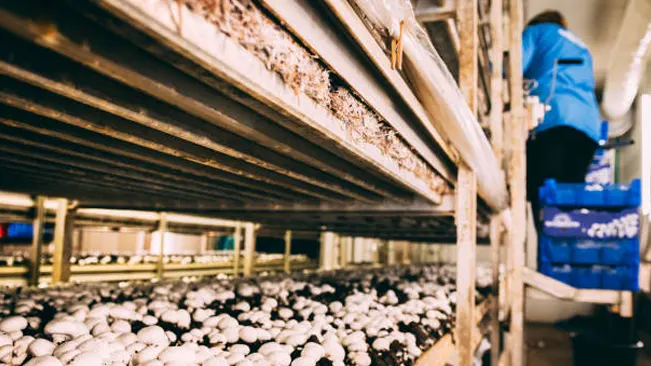
with the increasing demand for organic and locally-sourced foods, cultivating your own mushrooms can be financially rewarding. Whether you aim to supplement your kitchen’s pantry, start a small-scale organic operation, or embark on a larger commercial enterprise, the world of mushroom farming opens up a realm of possibilities.
By mastering the right cultivation techniques, you can transform simple spores into a thriving crop of edible fungi, enjoying the process from spore inoculation to delicious harvest.
List of 6 Essential Steps for Successful Mushroom Farming
- Initiating the Growth: Preparing the Mushroom Substrate
- Enhancing the Substrate: Perfecting the Compost
- The Spawning Process: Planting the Mushroom ‘Seeds’
- Casing Layer Application: The Growth Foundation
- The Pinning Stage: Beginning of Mushroom Formation
- Cropping: The Harvesting Phase
- Additional Considerations in Mushroom Farming
List of Essential Steps for Successful Mushroom Farming
1. Initiating the Growth: Preparing the Mushroom Substrate
The foundation of successful mushroom cultivation lies in the preparation of the mushroom substrate – the material on which the mushrooms will grow. This phase is crucial as the quality of the substrate directly impacts the health and yield of the mushrooms. Here’s a detailed look into this process:
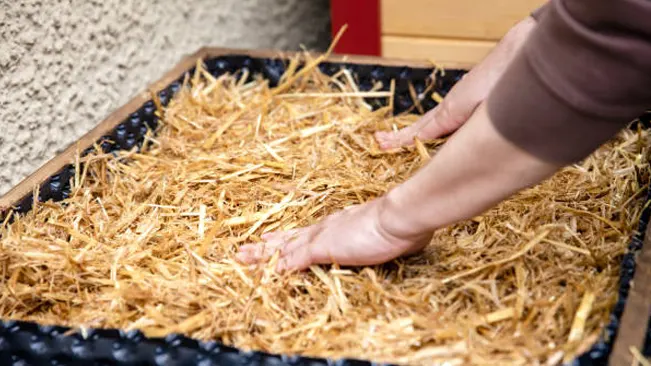
Key Steps in Substrate Preparation
Choosing the Substrate Material:
- Common substrate materials include straw, wood chips, sawdust, and composted manure. The choice of substrate often depends on the type of mushroom being cultivated. For example, straw and sawdust are popular choices for oyster mushrooms.
Preparing the Substrate:
- The substrate material often requires initial preparation, such as chopping or grinding, to make it more suitable for mushroom growth.
- The substrate needs to be moistened to the correct water content, as mushrooms require a moist environment to develop.
Sterilization or Pasteurization:
- Sterilizing or pasteurizing the substrate is crucial to kill any harmful bacteria, fungi, or insects that could compete with or harm the mushroom mycelium.
- Methods include steaming, boiling, or using chemical treatments. The choice of method may vary based on the scale of operation and the type of substrate.
Cooling and Conditioning:
- After sterilization, the substrate must be cooled down to a temperature that is conducive for the mushroom spores or mycelium to grow.
- During cooling, the substrate’s moisture and pH levels should be adjusted if necessary.
Testing for Contaminants:
- Before inoculation with mushroom spores, it’s important to check the substrate for any signs of contamination. Any contamination at this stage can jeopardize the entire cultivation process.
Creating the Perfect Environment:
- The prepared substrate must be placed in an environment with controlled temperature, humidity, and light conditions, tailored to the specific needs of the mushroom variety being cultivated.
By carefully preparing the substrate, you create the ideal environment for mushrooms to thrive. This stage sets the tone for the entire cultivation process, making it one of the most important steps in mushroom farming.
2. Enhancing the Substrate: Perfecting the Compost
After initial preparation, refining the compost is key to creating an environment that promotes healthy and abundant mushroom growth. This phase involves several steps to optimize the substrate:
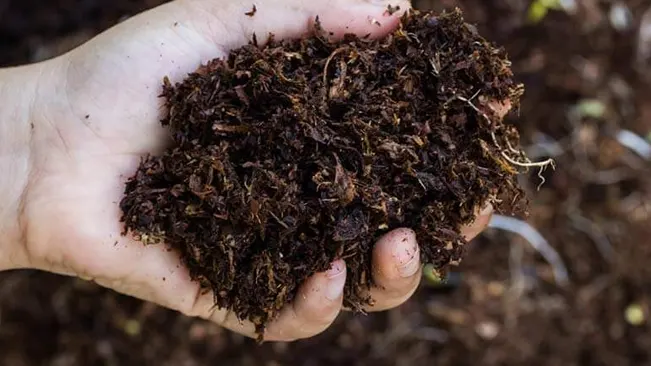
Steps in Substrate Optimization
Maturation of the Compost:
- Once the basic compost is prepared, it needs to undergo a maturation process. This involves allowing the compost to sit for a period, during which microbial activity breaks down the organic matter, making nutrients more available to the mushrooms.
- The maturation process can take several weeks and is crucial for developing a rich, nutrient-dense substrate.
Monitoring and Adjusting Moisture Content:
- The moisture level of the compost is vital. It should be moist but not waterlogged. The ideal moisture content is typically around 60-70%.
- Regularly monitoring and adjusting the water content ensures that the compost is neither too dry nor too saturated.
Temperature Management:
- Managing the temperature of the compost during the maturation process is crucial. The heat generated by microbial activity needs to be regulated to prevent overheating, which can kill beneficial microbes.
- The temperature should be monitored and controlled, usually staying in the range of 140-160°F (60-70°C) during the active phase of composting.
Aeration:
- Compost requires adequate aeration to support the microbial processes. This can be achieved through turning the compost or using aeration systems.
- Proper aeration helps in managing temperature and moisture levels and prevents the formation of harmful anaerobic conditions.
pH Balance:
- The pH of the compost affects mushroom growth. Different mushroom species prefer different pH levels, but most thrive in a slightly acidic to neutral pH range.
- The pH can be adjusted using various additives, such as gypsum, if necessary.
Final Conditioning:
- Once the compost has matured, it undergoes a final conditioning phase. This step ensures that the compost is free of any harmful pathogens and is rich in beneficial microbes.
- The compost is now ready for the inoculation of mushroom spores or mycelium.
Perfecting the compost is a balance of science and art. It requires attention to detail and understanding of the biological processes involved. This enhanced substrate lays the foundation for the healthy growth and development of mushroom crops, ultimately determining the quality and yield of the harvest.
3. The Spawning Process: Planting the Mushroom ‘Seeds’
This critical stage sets the foundation for the mushroom crop, as the quality of spawn and conditions of the substrate directly influence the health and yield of the resulting mushrooms.
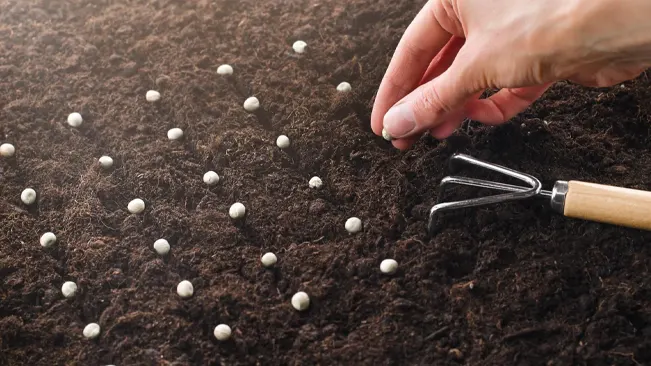
The Spawning Process
Introducing Spores or Mycelium:
- Spawning is the process of adding mushroom spores or mycelium (the vegetative part of the fungus) to the prepared substrate.
- This can be done by mixing spawn, which is the living fungal culture, into the substrate. The spawn will colonize the substrate, leading to mushroom growth.
Nutrient Enrichment during Spawning:
- 3.1 Supplementing the Compost: At the spawning stage, it’s often beneficial to add nutrients to the compost to enhance mushroom growth.
- This supplementation can include the addition of nitrogen-rich materials or other specific nutrients that the chosen mushroom variety requires.
Advanced Compost Preparation:
- 3.2 Phase III and Phase IV Compost: These advanced stages involve further compost maturation and conditioning. In Phase III, the compost is allowed to undergo a final aerobic fermentation, optimizing it for the mushroom mycelium.
- In Phase IV, the compost reaches the final conditioning phase, where it’s prepared to support the maximum yield of mushrooms.
Choosing Your Mushroom Variety:
- 3.3 Selecting the Right Type: Different mushroom varieties have different growth requirements and commercial values. The choice of variety should consider factors like climate, market demand, and the grower’s experience level.
- Popular choices for commercial cultivation include button mushrooms (Agaricus bisporus), oyster mushrooms (Pleurotus ostreatus), and shiitake mushrooms (Lentinula edodes).
Understanding the nuances of the spawning process, from selecting the right mushroom variety to enriching and preparing the compost, is essential for successful mushroom cultivation. Each step requires careful consideration to create the ideal conditions for mushroom growth and to ensure a successful and profitable harvest.
4. Casing Layer Application: The Growth Foundation
The casing layer application in mushroom farming is crucial as it creates an optimal microclimate for mushroom fruiting, providing moisture retention, protection, and a structure for the developing mushrooms. This layer, typically a mix of peat and limestone, plays a pivotal role in enhancing both the quality and yield of the mushroom crop by supporting the growth of the mycelium and stimulating the formation of fruiting bodies.
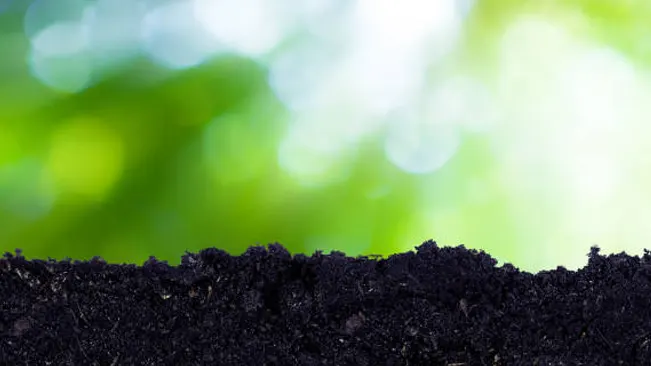
Steps in Layer Casing
Understanding the Casing Layer:
- The casing layer is a top layer of soil or soil-like material, applied over the colonized substrate.
- This layer provides a microclimate that is ideal for mushroom development, offering a structure for the emerging mushrooms, retaining moisture, and allowing the mycelium to form a dense network.
Applying the Casing Layer:
- The casing material, usually a mix of peat moss with limestone or other buffering agents, is spread evenly over the colonized substrate.
- The layer’s thickness can vary, but it typically ranges from 1 to 2 inches, depending on the mushroom species.
Introducing Beneficial Microorganisms:
- 4.1 Casing Inoculum (CI): The introduction of beneficial microorganisms into the casing layer can significantly impact mushroom yield.
- These microorganisms, often specific to mushroom cultivation, can help in creating an optimal environment for mushroom fruiting.
Enhancing the Casing Layer:
- 4.2 Nutrient Supplementation: Additional nutrients can be added to the casing layer to further encourage mushroom growth.
- Supplements might include nitrogen sources or other specific nutrients tailored to the needs of the mushroom variety being cultivated.
The application of the casing layer is a delicate balance of providing the right conditions for mushroom fruiting while not overwhelming the growing mycelium. It requires precision in terms of the composition, thickness, and moisture content of the casing material. By correctly implementing this stage, mushroom farmers can significantly enhance the quality and quantity of their mushroom crop.
5. The Pinning Stage: Beginning of Mushroom Formation
The pinning stage in mushroom cultivation is a pivotal moment when the first visible signs of mushroom growth, known as ‘pins,’ begin to emerge, signaling the transition from mycelial colonization to actual mushroom formation. This critical phase, influenced by precise environmental controls, sets the stage for the development and eventual yield of the mushroom crop.
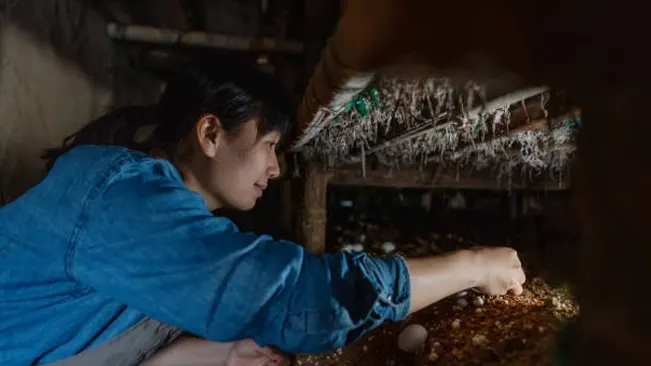
5 Key Phases of the Mushroom Pinning Stage
Transition to the Pinning Stage:
- The pinning stage follows the colonization of the substrate by the mushroom mycelium and the application of the casing layer.
- During this phase, environmental conditions such as temperature, humidity, and sometimes light are adjusted to signal the mycelium to start forming mushrooms.
Formation of Mushroom Pins:
- ‘Pins’ are the tiny, initial forms of mushrooms that emerge from the mycelium. They are the primordia or the earliest stage of mushroom development.
- These pins eventually grow into the mushrooms that are harvested.
Environmental Conditions for Pinning:
- Specific conditions required for pinning vary depending on the mushroom species but generally include a reduction in temperature and an increase in fresh air and humidity.
- For example, button mushrooms require a drop in temperature to around 60°F (15°C) and increased air exchange to initiate pinning.
Monitoring and Adjusting Conditions:
- Careful monitoring and adjusting of environmental conditions are crucial during the pinning stage. The right balance of temperature, humidity, and fresh air is essential for optimal pin development.
- Inconsistent or incorrect conditions can lead to poor pin formation, affecting the overall yield and quality of the mushroom crop.
Importance of the Pinning Stage:
- The pinning stage is critical as it sets the foundation for the quantity and quality of the mushroom harvest.
- Properly managed, this stage can lead to a uniform and abundant crop, while poor management can result in a reduced or low-quality yield.
In mushroom farming, the pinning stage is a turning point where the grower’s efforts start to manifest visibly. It requires a nuanced understanding of the specific mushroom variety’s needs and a careful balance of environmental factors to ensure the successful development of healthy, harvestable mushrooms.
6. Cropping: The Harvesting Phase
The cropping phase, or the harvesting phase, is the final and one of the most rewarding stages of mushroom farming.

5 Harvesting Phase
Recognizing Harvest Time:
- Identifying the right time to harvest is crucial. Typically, mushrooms are ready to harvest when the caps are fully formed but before they start to uncurl or release their spores.
- The exact timing varies depending on the mushroom variety. For example, button mushrooms are often harvested when the cap is still closed, whereas oyster mushrooms are picked when the cap is fully expanded.
Harvesting Techniques:
- Mushrooms should be harvested gently to avoid damaging the mycelium and the remaining pins and crops.
- The common method is to twist and pull the mushroom gently from its base. Alternatively, a sharp knife can be used to cut the mushroom at the base, which is especially useful for varieties that grow in clusters.
Frequency of Harvest:
- Many mushroom varieties allow for multiple harvests, or ‘flushes’, from the same mycelium. There can be several days to a couple of weeks between flushes.
- After each harvest, the environmental conditions, such as humidity and temperature, might need to be adjusted to encourage further flushes.
Post-Harvest Handling:
- Immediate post-harvest handling is important to maintain the quality of the mushrooms. They should be cooled as soon as possible to preserve freshness and extend shelf life.
- Proper cleaning, handling, and storage are crucial, as mushrooms are highly perishable.
Maximizing Yield:
- Consistent monitoring and adapting of growing conditions throughout the cropping phase can maximize yield and quality.
- Avoiding contamination and maintaining optimal conditions are key factors in achieving a successful crop.
The cropping phase is the culmination of the mushroom cultivation process, where growers reap the rewards of their meticulous care and effort. Proper harvesting techniques and timing are essential for ensuring a high-quality product and can greatly influence the profitability and success of a mushroom farming operation.
Additional Considerations in Mushroom Farming
Nutrient Management
Nutrient management is a crucial aspect of mushroom cultivation. It involves understanding and providing the right balance of nutrients needed for mushroom growth.
Effective nutrient management is about providing mushrooms with the right amount and balance of nutrients throughout their growth cycle. This can involve carefully selecting the substrate components and supplementing as needed, to ensure robust and healthy mushroom growth. For mushroom farmers, understanding and managing these nutritional aspects is key to maximizing yield and ensuring a high-quality crop.
Environmental Aspects in Mushroom Farming
Mushroom cultivation can be environmentally friendly, especially when using agricultural waste products as a substrate. However, sustainable practices also involve managing water usage, energy consumption, and minimizing the carbon footprint. Integrated pest management and the use of organic methods can help in reducing the environmental impact often associated with chemical controls.
By incorporating these sustainable practices and responsible pest and disease management strategies, mushroom farming can be conducted in a way that is not only productive but also respectful to the environment.
Post-Harvest Management
After harvesting, the spent mushroom substrate (SMS) can be a concern. However, it can also be an asset, as SMS is a rich organic material. It can be used as a soil conditioner, in landscaping, or as a substrate for other crops.
Properly managed, SMS can be an ecological asset, contributing to soil health and reducing waste. However, careful consideration is needed to ensure its use is beneficial and not detrimental to the environment.
Related Post:
Conclusion
Mushroom farming stands as a unique and sustainable agricultural practice, merging the reclamation of agricultural by-products with the production of nutritious and flavorful fungi. Its success hinges on a meticulous process that spans from substrate preparation to harvest, demanding both careful environmental management and a keen understanding of fungal growth. This farming method not only provides a bountiful yield of mushrooms but also contributes positively to environmental sustainability through efficient resource utilization and waste reduction.
Frequently Asked Questions (FAQs)
- What types of mushrooms are best for beginners to farm?
Common beginner-friendly mushrooms include button, oyster, and shiitake varieties due to their resilient nature and straightforward cultivation requirements. - How long does it take to grow mushrooms?
The time from inoculation to harvest varies depending on the mushroom species, but it typically ranges from several weeks to a few months. - Do I need a lot of space to start mushroom farming?
No, mushroom farming can be started on a small scale, even indoors, as mushrooms don’t require sunlight and can be grown in containers or bags. - What is the ideal temperature for mushroom cultivation?
While it varies by species, most mushrooms thrive in temperatures ranging from 55°F to 70°F (13°C to 21°C). - How do I know when mushrooms are ready to be harvested?
Mushrooms are usually ready for harvest just before or as their caps fully open. The exact timing can vary by type and desired size. - Can mushroom farming be profitable?
Yes, mushroom farming can be profitable, especially with varieties that have high market demand and efficient cultivation methods. - What kind of substrate is best for mushroom farming?
The best substrate depends on the mushroom variety; common substrates include straw, sawdust, wood chips, and composted manure. - How can I prevent mold and pests in my mushroom farm?
Maintaining clean cultivation conditions, proper humidity, and temperature control are essential to preventing mold and pests. - Is mushroom farming environmentally sustainable?
Yes, it’s considered sustainable due to its low land and water usage and its ability to upcycle agricultural waste products as substrates. - Can I grow mushrooms year-round?
Yes, mushrooms can be grown year-round under controlled indoor conditions where temperature and humidity are maintained. Outdoor cultivation may depend on climate and seasonal conditions.

Charles Hayes
Forestry AuthorI'm Charles Hayes, I bring over 15 years of specialized expertise in landscaping and woodworking, blending artistic design with sustainable environmental stewardship. My career, fueled by a profound passion for the natural world, encompasses extensive education and hands-on experience in creating harmonious, eco-friendly outdoor spaces and responsibly managing forest resources. Recognized for my professional standing, I am committed to continuous learning and certification in cutting-edge practices. My expertise is not only reflected in my work but also in my contributions to community projects, educational workshops, and collaborations with industry leaders. As an authoritative voice in my field, I strive to share knowledge and promote environmentally conscious approaches, making me a trusted resource in landscaping and forestry.

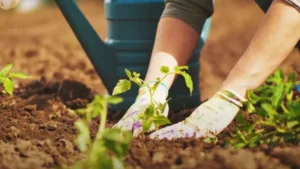






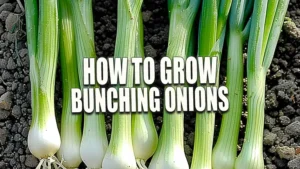




Leave your comment